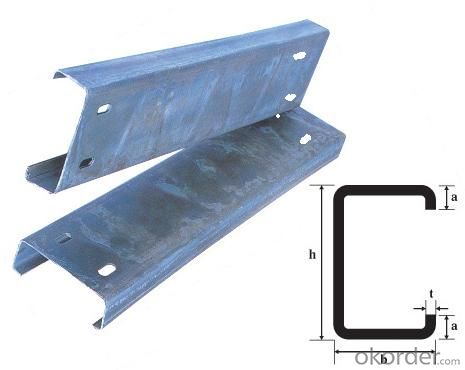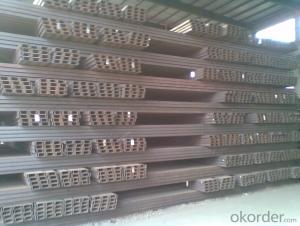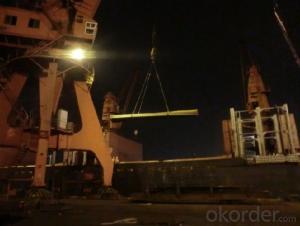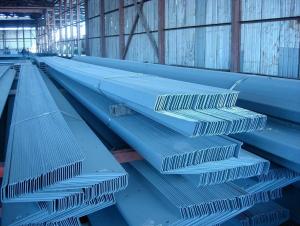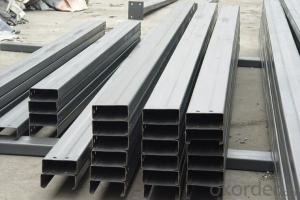Channel Steel Bar C-Type Steel Channel Bar
- Loading Port:
- Tianjin
- Payment Terms:
- TT or LC
- Min Order Qty:
- 30 m.t.
- Supply Capability:
- 40000 m.t./month
OKorder Service Pledge
OKorder Financial Service
You Might Also Like
Product Description:
OKorder is offering Channel Steel Bar C-Type Steel Channel Bar at great prices with worldwide shipping. Our supplier is a world-class manufacturer of steel, with our products utilized the world over. OKorder annually supplies products to European, North American and Asian markets. We provide quotations within 24 hours of receiving an inquiry and guarantee competitive prices.
Product Applications:
Channel Steel Bar C-Type Steel Channel Bar are ideal for structural applications and are widely used in the construction of buildings and bridges, and the manufacturing, petrochemical, and transportation industries.
Product Advantages:
OKorder's Channel Steel Bar C-Type Steel Channel Bar are durable, strong, and resist corrosion.
Main Product Features:
· Premium quality
· Prompt delivery & seaworthy packing (30 days after receiving deposit)
· Corrosion resistance
· Can be recycled and reused
· Mill test certification
· Professional Service
· Competitive pricing
Product Specifications:
| Tianjin Jujin Industry and Trading Co.,Ltd | |||||
| Dafengdui Village,Dafengdui Town,Jinghai Country,Tianjin City,China | |||||
| Tel:+86-22-68661881 Fax:+86-22-68663603 | |||||
| Country of Origin:China | |||||
| Tolerance:Accroding to clients'requirements | |||||
| Delivery time:7-25 days | |||||
| Payment term:L/C or T/T | |||||
| Packing:Mills Standard Export Strong Packing in Bundles | |||||
| Details Products Description | |||||
| C channel steel | |||||
| Material | Specificationmm | Thicknessmm | Weightkg/m | ||
| h | b | a | |||
| Q195-Q235 Q345 | 80 | 50 | 20 | 2.25 | 3.886 |
| 80 | 50 | 20 | 2.5 | 4.318 | |
| 80 | 50 | 20 | 2.75 | 4.749 | |
| 80 | 50 | 20 | 3 | 5.181 | |
| 100 | 50 | 20 | 2.25 | 4.239 | |
| 100 | 50 | 20 | 2.5 | 4.71 | |
| 100 | 50 | 20 | 2.75 | 5.181 | |
| 100 | 50 | 20 | 3 | 5.652 | |
| 120 | 50 | 20 | 2.25 | 4.592 | |
| 120 | 50 | 20 | 2.5 | 5.103 | |
| 120 | 50 | 20 | 2.75 | 5.613 | |
| 120 | 50 | 20 | 3 | 6.123 | |
| 140 | 60 | 20 | 2.5 | 5.888 | |
| 140 | 50 | 20 | 2.5 | 5.495 | |
| 140 | 60 | 20 | 3 | 7.065 | |
| 140 | 50 | 20 | 3 | 6.594 | |
| 160 | 50 | 20 | 2.5 | 5.888 | |
| 160 | 60 | 20 | 2.5 | 6.28 | |
| 160 | 70 | 20 | 2.5 | 6.673 | |
| 160 | 50 | 20 | 3 | 7.065 | |
| 160 | 60 | 20 | 3 | 7.458 | |
| 160 | 70 | 20 | 3 | 7.536 | |
| 180 | 50 | 20 | 2.5 | 6.28 | |
| 180 | 60 | 20 | 2.5 | 6.673 | |
| 180 | 70 | 20 | 2.5 | 7.065 | |
| 180 | 80 | 20 | 2.5 | 7.458 | |
| 180 | 50 | 20 | 3 | 7.536 | |
| 180 | 60 | 20 | 3 | 8.007 | |
| 180 | 70 | 20 | 3 | 8.478 | |
| 180 | 80 | 20 | 3 | 8.949 | |
| 200 | 50 | 20 | 2.5 | 6.673 | |
| 200 | 60 | 20 | 2.5 | 7.065 | |
| 200 | 70 | 20 | 2.5 | 7.458 | |
| 200 | 80 | 20 | 2.5 | 7.85 | |
| 200 | 50 | 20 | 3 | 8.007 | |
| 200 | 60 | 20 | 3 | 8.478 | |
| 200 | 70 | 20 | 3 | 8.949 | |
| 200 | 80 | 20 | 3 | 9.42 | |
| 220 | 50 | 20 | 2.5 | 7.065 | |
| 220 | 60 | 20 | 2.5 | 7.458 | |
| 220 | 70 | 20 | 2.5 | 7.85 | |
| 220 | 80 | 20 | 2.5 | 8.243 | |
| 220 | 50 | 20 | 3 | 8.478 | |
| 220 | 60 | 20 | 3 | 8.949 | |
| 220 | 70 | 20 | 3 | 9.42 | |
| 220 | 80 | 20 | 3 | 9.891 | |
| 240 | 50 | 20 | 2.5 | 7.458 | |
| 240 | 60 | 20 | 2.5 | 7.85 | |
| 240 | 70 | 20 | 2.5 | 8.243 | |
| 240 | 80 | 20 | 2.5 | 8.635 | |
| 240 | 50 | 20 | 3 | 8.949 | |
| 240 | 60 | 20 | 3 | 9.42 | |
| 240 | 70 | 20 | 3 | 9.891 | |
| 240 | 80 | 20 | 3 | 10.362 | |
FAQ:
Q1: Why buy Materials & Equipment from OKorder.com?
A1: All products offered byOKorder.com are carefully selected from China's most reliable manufacturing enterprises. Through its ISO certifications, OKorder.com adheres to the highest standards and a commitment to supply chain safety and customer satisfaction.
Q2: How do we guarantee the quality of our products?
A2: We have established an advanced quality management system which conducts strict quality tests at every step, from raw materials to the final product. At the same time, we provide extensive follow-up service assurances as required.
Q3: How soon can we receive the product after purchase?
A3: Within three days of placing an order, we will begin production. The specific shipping date is dependent upon international and government factors, but is typically 7 to 10 workdays.
Images:
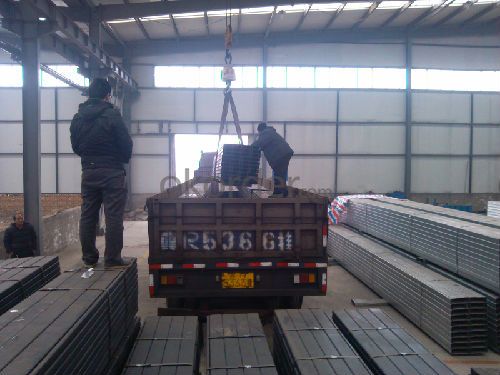
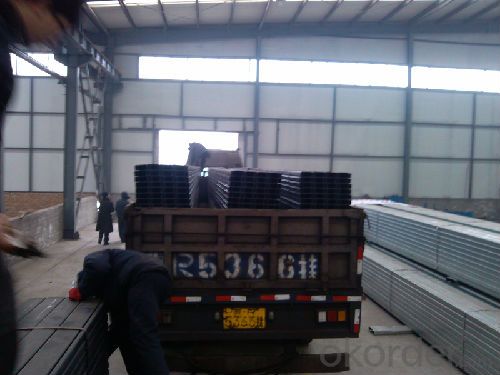
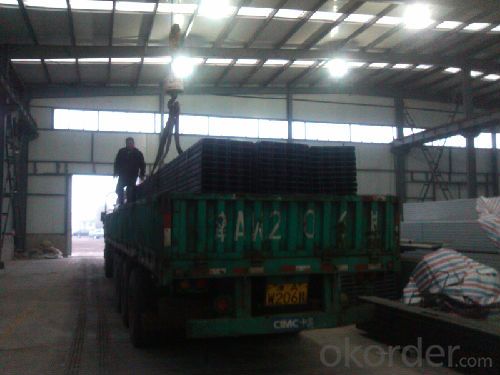
- Q: What are the factors that affect the price of steel channels?
- There are several factors that can impact the price of steel channels. 1. Raw material costs: The price of steel channels is heavily influenced by the cost of raw materials, particularly steel. Fluctuations in the price of iron ore, coal, and other materials used in steel production can directly affect the cost of manufacturing steel channels. 2. Supply and demand: The overall demand for steel channels in the market can impact their price. If demand is high and supply is limited, prices are likely to increase. Conversely, if demand is low and there is excess supply, prices may decrease. 3. Manufacturing and processing costs: The cost of producing steel channels, including labor, energy, and equipment expenses, can impact the final price. Higher manufacturing costs may lead to higher prices for steel channels. 4. Market competition: The level of competition among steel channel manufacturers can also influence prices. When there are multiple producers offering similar products, they may engage in price competition to attract customers, resulting in lower prices. Conversely, if there are fewer suppliers or if they have a unique product, prices may be higher. 5. Transportation and logistics: The cost of transporting steel channels from manufacturing facilities to distribution centers or end-users can impact the final price. Factors such as fuel prices, shipping distances, and transportation infrastructure can all affect transportation costs, which may be passed on to the buyer. 6. Government regulations and tariffs: Trade policies, import duties, and government regulations can also affect the price of steel channels. Tariffs imposed on imported steel channels can increase their price, while government subsidies or support can lead to lower prices. 7. Economic conditions: Overall economic conditions, both globally and domestically, can have an impact on steel channel prices. Factors such as economic growth, inflation, and currency exchange rates can all influence the cost of steel channels. It is important to note that these factors are interrelated and can vary depending on the specific market dynamics and location. Therefore, understanding these factors and their potential impact is crucial for buyers and sellers in the steel channel industry.
- Q: How are steel channels used in the construction of airports or terminals?
- Steel channels are commonly used in the construction of airports or terminals for various purposes. They are primarily used for structural support, providing strength and stability to the overall building design. Steel channels are often utilized as framing elements for walls, ceilings, and floors, ensuring a robust and durable infrastructure. Additionally, they can be employed to create specific areas such as baggage handling systems, walkways, or platforms, enhancing efficiency and functionality within the airport or terminal.
- Q: Channel
- Channel steel is a long strip steel with a cross section, and belongs to the construction and mechanical carbon structural steel. It is a complex section steel, whose cross section has a groove shape. Channel steel is mainly used in building structure, curtain wall engineering, mechanical equipment and vehicle manufacturing, etc..
- Q: UAP300 what channel? What specifications?. You great God to explain ah. I am indebted forever urgently.. Thank you ~!
- The UAP channel is the European standard, the same height as the channel width standard half generally weighs about half of GB for no purpose, some necessary standard can save half the cost, which belongs to the light channel.
- Q: Can steel channels be used for conveyor supports?
- Indeed, steel channels are suitable for the purpose of supporting conveyors. In the realm of industrial applications, steel channels are widely utilized owing to their remarkable strength and durability. They offer outstanding support and stability to conveyors, which are burdened with carrying hefty loads and demand a stout support structure. By virtue of their ease of fabrication, steel channels can be readily customized to meet specific conveyor criteria. Additionally, they possess resistance to corrosion and are capable of withstanding harsh operational conditions. All in all, steel channels are a favored option for conveyor supports due to their reliability and sturdiness.
- Q: Are steel channels available in non-standard lengths?
- Yes, steel channels are available in non-standard lengths. While standard lengths for steel channels are typically 20 feet or 6 meters, there are manufacturers and suppliers who offer custom cutting services to provide non-standard lengths based on the specific requirements of customers. This allows for greater flexibility in construction and fabrication projects, where the need for precise measurements and customized lengths may arise. Additionally, non-standard lengths can be advantageous in minimizing waste and optimizing material usage, leading to cost savings. It is important to consult with steel channel suppliers or manufacturers to inquire about their capabilities and options for non-standard lengths.
- Q: What are the different types of connections used for steel channels in bridges?
- Steel channels in bridges can be joined using various types of connections, each with its own benefits and considerations. Some commonly used connection types are as follows: 1. Welded connections: Welding is widely employed to connect steel channels in bridges. This method involves heating the materials until they melt and then fusing them together. Welded connections are renowned for their strength and durability. However, skilled labor and proper quality control are necessary to ensure the integrity of the welds. 2. Bolted connections: Bolted connections entail using bolts and nuts to fasten steel channels. This type of connection offers flexibility as it allows for disassembly and reassembly if required. It is also relatively easier to install and inspect compared to welded connections. Nevertheless, periodic maintenance may be needed to ensure the bolts remain tight. 3. Riveted connections: In older bridge constructions, rivets were commonly used. This method involves inserting a rivet into a pre-drilled hole and deforming it to secure the steel channels. Riveted connections provide good shear resistance, but they are less frequently used today due to the labor-intensive installation process and difficulties in inspection and maintenance. 4. High-strength bolted connections: High-strength bolts, which possess greater tensile strength than regular bolts, are commonly employed in modern bridge constructions. These connections offer high resistance to shear and tension forces. Specialized tools and careful installation are required to achieve the desired strength. 5. Moment connections: Moment connections are designed to transfer bending moments between steel channels in bridges. They are typically used in situations where the bridge is subjected to significant lateral forces, such as in earthquake-prone areas. Moment connections are usually welded and necessitate meticulous design and analysis to ensure their performance under different loading conditions. It is important to consider various factors, including bridge design, anticipated loads, construction techniques, and maintenance requirements when selecting connection types. Engineers and designers take these factors into account to determine the most suitable connections that will provide the necessary strength, durability, and safety for steel channels in bridges.
- Q: How do you calculate the load capacity of steel channels?
- The load capacity of steel channels can be calculated using the formula: Load capacity = Moment of inertia / (Section modulus x Distance from the neutral axis).
- Q: Are steel channels suitable for DIY projects?
- Yes, steel channels are suitable for DIY projects. They are versatile and durable, making them ideal for various applications such as building frames, shelving units, and structural supports. Steel channels can be easily cut, drilled, and welded, allowing for customization to fit specific project needs. Additionally, they provide excellent strength and stability, ensuring long-lasting results for DIY enthusiasts.
- Q: Specification for channel steels used in fork trucks
- Specifications are as follows:25a:250x78x7x1228a:280x82x7.5x12.530a:300x85x7.5x13.5
Send your message to us
Channel Steel Bar C-Type Steel Channel Bar
- Loading Port:
- Tianjin
- Payment Terms:
- TT or LC
- Min Order Qty:
- 30 m.t.
- Supply Capability:
- 40000 m.t./month
OKorder Service Pledge
OKorder Financial Service
Similar products
Hot products
Hot Searches
Related keywords




